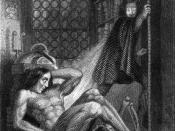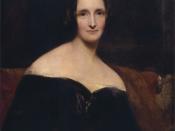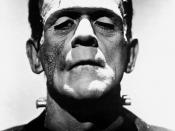The "Frankenstein" novel was created by a woman named Mary Shelley. She made up the tale when telling ghost stories with her family, who later told her she should publish it as it was so good. She officially published her story in 1831. At the time, it was quite rare for a woman to produce a very good book. The novel is about a man called Doctor Victor Frankenstein who loses his mother when she gives birth to his brother, William. He is so traumatised by his mothers' death that he becomes obsessed with infusing life into something that has previously died and leaves his home town in Geneva to travel to a university in Ingolstadt, Germany, to study medicine. He rents a house and uses his attic to start his experiments on "re-birth".
Chapter Five is a crucial moment in the play where Frankenstein realises what grotesque, monstrous contraption of which he infused life into.
He realises what a terrible mistake he has made, what a disaster he has invented. This has a major impact on the rest of the novel as it could have gone either way; he could have loved his invention or he could have hated it. He chose to hate it. By choosing this, it shows how narrow-minded people in the nineteenth could be because if the monster was let loose on the streets, the public would go mad; they would demand that whoever made the "monster" be hanged along side the creature. Therefore Frankenstein chose to dedicate the rest of his life to destroying his own creation.
This chapter shows more about the character of Dr Frankenstein. It shows how he was too obsessive in his work of infusing life into that what is now an inanimate object. It shows,


